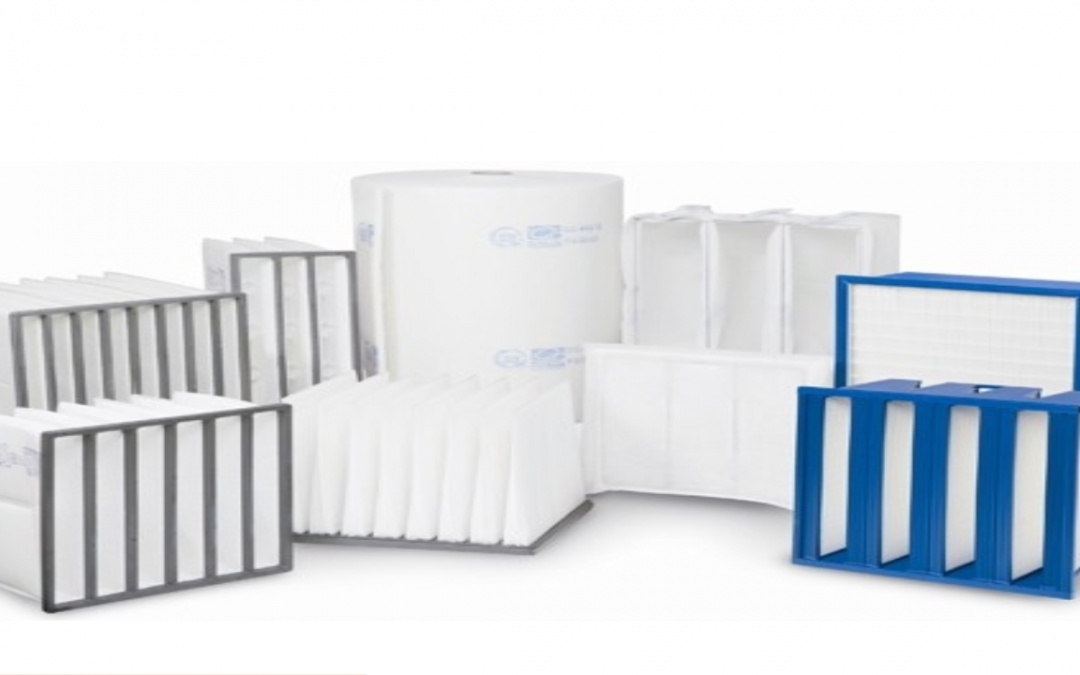Currently, there are too numerous electret enhanced products to keep track of in the air filtration industry. Interestingly, as soon as ASHRAE published the MERV system of testing filters the effort to identify and expose the performance issues with electret media was underway. Since that time, two ASHRAE sponsored research papers clearly make the statement that ALL ELECTRET media loses efficiency, sometimes in a matter of days or weeks.
How is this possible if the MERV number is supposed to be the MINIMUM efficiency?
It is important to recognize that the benefit of using electret enhanced media is to achieve higher efficiency with lower restriction to airflow. With energy efficiency pushing decisions on many products, the attraction of high MERV numbers with very low-pressure drops can potentially offer savings in electricity. This low-pressure drop is achieved with the use of large coarse fiber that is electrostatically enhanced thus there isn’t as much fiber density which increases the pressure.
As with all things the industry will find answers to problems as they are discovered and find solutions where they are needed. Lab testing efficiency is a short term evaluation in a laboratory environment without exposure to the normal element’s filters see in use. One of the AHRAE research projects was asked to develop a bag of test dust that revealed the effects of service use of filters that caused the electret media to drop in efficiency.
In that study, it was found that there are “superfines” (below 0.05 microns) in the atmosphere and concentrations can be in the hundreds of millions per cubic foot of air. These particles have the highest attraction to the electret draw and thus coat the fibers uniformly, eventually insulating the fiber charge. Once discovering the particle range that caused the performance to drop, a simulation test was performed to correlate lab hours to “real use” of months of exposure to superfines. That work was very conclusive and offered performance values that were predictable based upon lab testing.
How much will the electret efficiency drop? This is the reason for the proposed conditioning step (ASHRAE 52.2 Appendix J) that creates superfine challenges in the lab in hours-months comparisons. In voluntary open ’round robin’ testing at seven labs around the nation the drop in efficiency was very similar patterned. While the final number varied based upon the interpretation of the testing personnel understaind of the procedure, the curves generated were identical patterns within ~5% variability. It was easily possible to drop 3 or 4 MERV points.
This effect is not as prevalent in the lower efficiency products as it is in the MERV 11 and higher filters. As most of the MERV 6,7, and8 filters show variability anyway and are only reporting on the largest particle sizes and thus the superfines play a smaller role.
Potential improvements in the use of electrets have begun to combine electret enhancement with fine fiber media to use the benefit of electret high initial efficiency potentially enhancing fine fiber mechanical efficiency. Plans for these combinations are made to recognize the high initial efficiency and have the “drop” be controlled to one MERV number if possible. When this combination filter isdeveloped it will likely have higher pressuredrops than electrets but lower thanmechanical fine fiber media.
The real key IF the decision is to use electret enhanced filters – do not prefilter them. When these filters are prefiltered there aren’t enough of the larger particles challenging the filter to assist the mechanical efficiency gain because the prefilter stops them.
Thus Upgrade or Hoax?
This goes back to the old Proverb – “if it sounds too good to be true- it probably is” It is possible to have very high-efficiency filtration without prohibitive pressure drop – but there will likely be an increase as the MERV number rises. However beware of the MERV 11 two-inch filter that has a pressure drop of similar values to a similar-looking MERV 7, because in a few weeks when the electret fiber is coated with superfines they both will likely be MERV 7.
Author: Phil Maybee, CAFS
The Filter Man,LLC.


Recent Comments